1. Ciofolo MJ, Clergue F, Devilliers C, Ben Ammar M, Viars P. Changes in ventilation, oxygen uptake, and carbon dioxide output during recovery from isoflurane anesthesia. Anesthesiology. 1989; 70:737–741. PMID:
2497661.

2. Kurz A, Sessler DI, Schroeder M, Kurz M. Thermoregulatory response thresholds during spinal anesthesia. Anesth Analg. 1993; 77:721–726. PMID:
8214655.

3. Han SY, Jin HC, Yang WD, Lee JH, Cho SH, Chae WS, et al. The effect of low-dose ketamine on post-caesarean delivery analgesia after spinal anesthesia. Korean J Pain. 2013; 26:270–276. PMID:
23862001.

4. Matsukawa T, Sessler DI, Christensen R, Ozaki M, Schroeder M. Heat flow and distribution during epidural anesthesia. Anesthesiology. 1995; 83:961–967. PMID:
7486181.

5. Lee C, Choi DH, Chae SU. Circadian effects on neural blockade of intrathecal hyperbaric bupivacaine. Korean J Pain. 2010; 23:186–189. PMID:
20830264.

6. Crowley LJ, Buggy DJ. Shivering and neuraxial anesthesia. Reg Anesth Pain Med. 2008; 33:241–252. PMID:
18433676.

7. Han JW, Kang HS, Choi SK, Park SJ, Park HJ, Lim TH. Comparison of the effects of intrathecal fentanyl and meperidine on shivering after cesarean delivery under spinal anesthesia. Korean J Anesthesiol. 2007; 52:657–662.

8. Alfonsi P, Hongnat JM, Lebrault C, Chauvin M. The effects of pethidine, fentanyl and lignocaine on postanaesthetic shivering. Anaesthesia. 1995; 50:214–217. PMID:
7717486.

9. Alfonsi P, Sessler DI, Du Manoir B, Levron JC, Le Moing JP, Chauvin M. The effects of meperidine and sufentanil on the shivering threshold in postoperative patients. Anesthesiology. 1998; 89:43–48. PMID:
9667292.

10. Kurz M, Belani KG, Sessler DI, Kurz A, Larson MD, Schroeder M, et al. Naloxone, meperidine, and shivering. Anesthesiology. 1993; 79:1193–1201. PMID:
8267194.

11. Delaunay L, Bonnet F, Liu N, Beydon L, Catoire P, Sessler DI. Clonidine comparably decreases the thermoregulatory thresholds for vasoconstriction and shivering in humans. Anesthesiology. 1993; 79:470–474. PMID:
8363071.

12. Fukuda K. Intravenous opioid anesthetics. In : Miller RD, editor. Miller's anesthesia. 6th ed. New York (NY): Elsevier Churchill Livingstone;2005. p. 379–438.
13. Casey WF, Smith CE, Katz JM, O'Loughlin K, Weeks SK. Intravenous meperidine for control of shivering during caesarean section under epidural anaesthesia. Can J Anaesth. 1988; 35:128–133. PMID:
3356050.

14. Chen JC, Hsu SW, Hu LH, Hong YJ, Tsai PS, Lin TC, et al. Intrathecal meperidine attenuates shivering induced by spinal anesthesia. Ma Zui Xue Za Zhi. 1993; 31:19–24. PMID:
7968324.
15. Roy JD, Girard M, Drolet P. Intrathecal meperidine decreases shivering during cesarean delivery under spinal anesthesia. Anesth Analg. 2004; 98:230–234. PMID:
14693625.

16. Hong JY, Lee IH. Comparison of the effects of intrathecal morphine and pethidine on shivering after Caesarean delivery under combined-spinal epidural anaesthesia. Anaesthesia. 2005; 60:1168–1172. PMID:
16288613.

17. Khan ZH, Zanjani AP, Makarem J, Samadi S. Antishivering effects of two different doses of intrathecal meperidine in caesarean section: a prospective randomised blinded study. Eur J Anaesthesiol. 2011; 28:202–206. PMID:
21325901.

18. Crossley AW, Mahajan RP. The intensity of postoperative shivering is unrelated to axillary temperature. Anaesthesia. 1994; 49:205–207. PMID:
8147511.

19. Horn EP, Schroeder F, Wilhelm S, Sessler DI, Standl T, von dem Busche K, et al. Postoperative pain facilitates nonthermoregulatory tremor. Anesthesiology. 1999; 91:979–984. PMID:
10519500.

20. Mahajan RP, Grover VK, Sharma SL, Singh H. Intraocular pressure changes during muscular hyperactivity after general anesthesia. Anesthesiology. 1987; 66:419–421. PMID:
3826703.

21. de Courcy JG. Artefactual 'hypotension' from shivering. Anaesthesia. 1989; 44:787–788. PMID:
2802137.

22. Barker SJ, Shah NK. The effects of motion on the performance of pulse oximeters in volunteers (revised publication). Anesthesiology. 1997; 86:101–108. PMID:
9009945.

23. Just B, Delva E, Camus Y, Lienhart A. Oxygen uptake during recovery following naloxone. Relationship with intraoperative heat loss. Anesthesiology. 1992; 76:60–64. PMID:
1729937.

24. Jones HD, McLaren CA. Posoperative shvering and hypoxaemia after halothane, nitrous oxide and oxygen anaesthesia. Br J Anaesth. 1965; 37:35–41. PMID:
14254043.

25. Pflug AE, Aasheim GM, Foster C, Martin RW. Prevention of post-anaesthesia shivering. Can Anaesth Soc J. 1978; 25:43–49. PMID:
624105.

26. Entezari Asl M, Isazadehfar K, Akhavanakbari G, Khoshbaten M. The effect of ondansetron in prevention of postoperative shivering after general anesthesia in gynecological surgery. Iran Red Crescent Med J. 2012; 14:316–317. PMID:
22829994.
27. Shoar S, Esmaeili S, Khorgami Z, Naderan M, Shoar N. Efficacy of acupuncture in prevention of postoperative anaesthesia-related shivering. Acupunct Med. 2013; 31:120–121. PMID:
23291356.

28. Horn EP, Werner C, Sessler DI, Steinfath M, Schulte am Esch J. Late intraoperative clonidine administration prevents postanesthetic shivering after total intravenous or volatile anesthesia. Anesth Analg. 1997; 84:613–617. PMID:
9052312.

29. Stoelting RK, Hillier SC. Pharmacology & physiology in anesthetic practice. 4th ed. Philadelphia (PA): Lippincott Williams & Wilkins;2006. p. 864.
30. Kurz A, Ikeda T, Sessler DI, Larson MD, Bjorksten AR, Dechert M, et al. Meperidine decreases the shivering threshold twice as much as the vasoconstriction threshold. Anesthesiology. 1997; 86:1046–1054. PMID:
9158353.


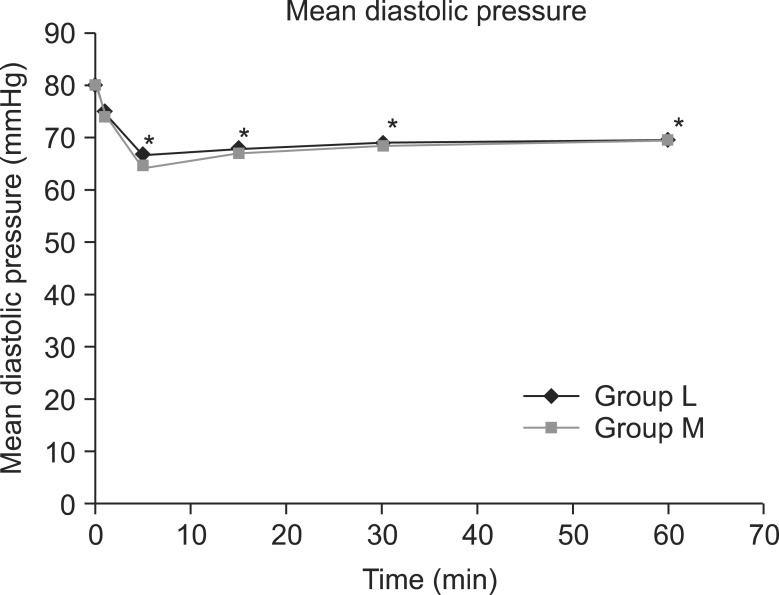
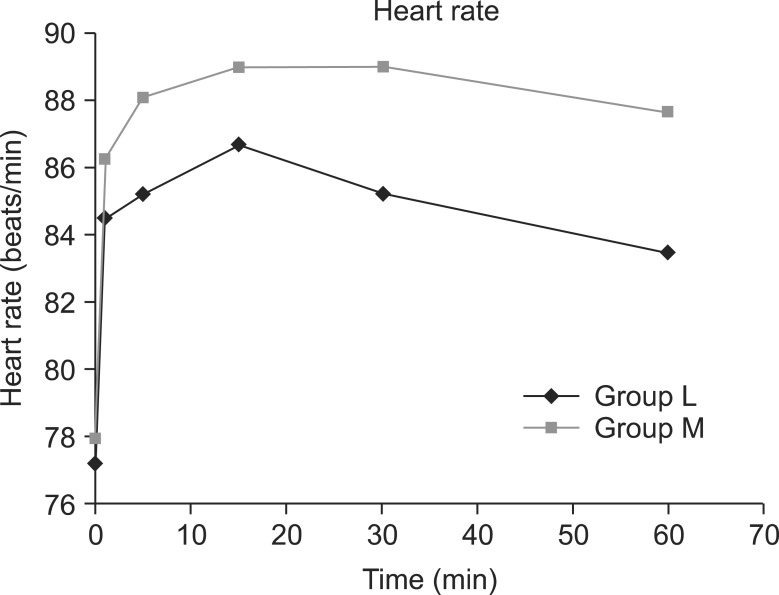

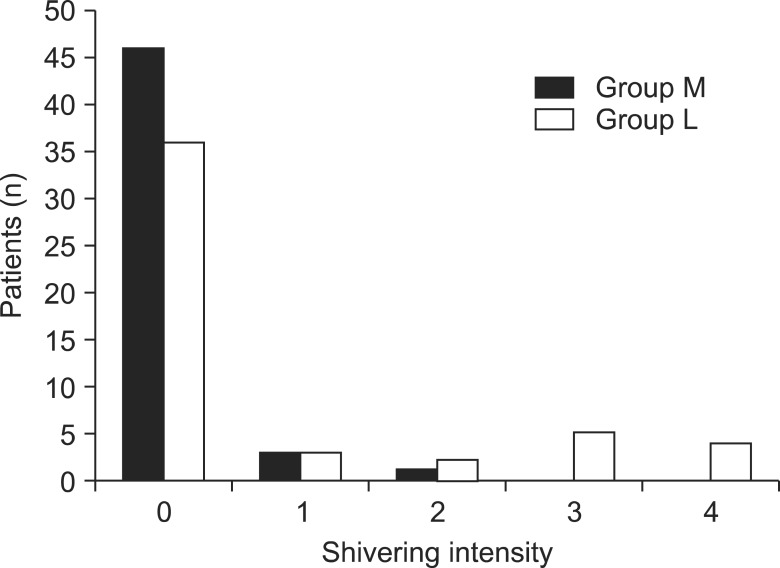




 PDF
PDF Citation
Citation Print
Print


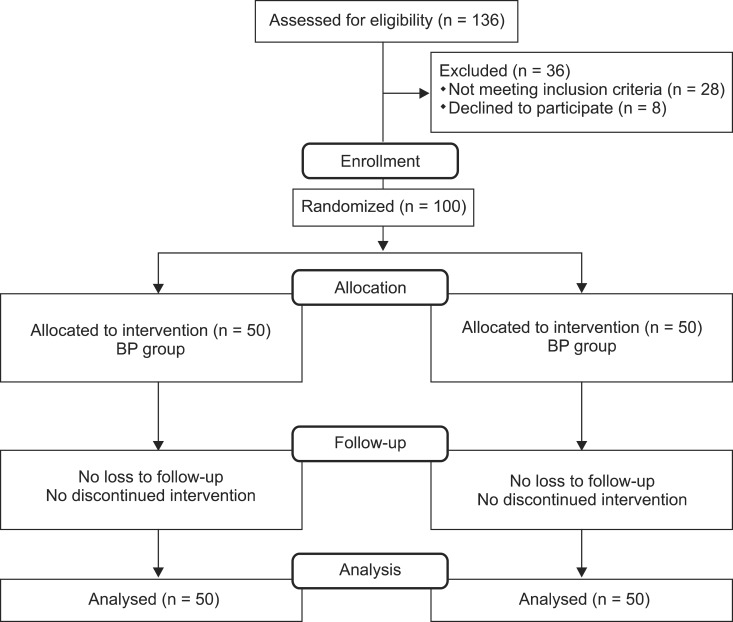
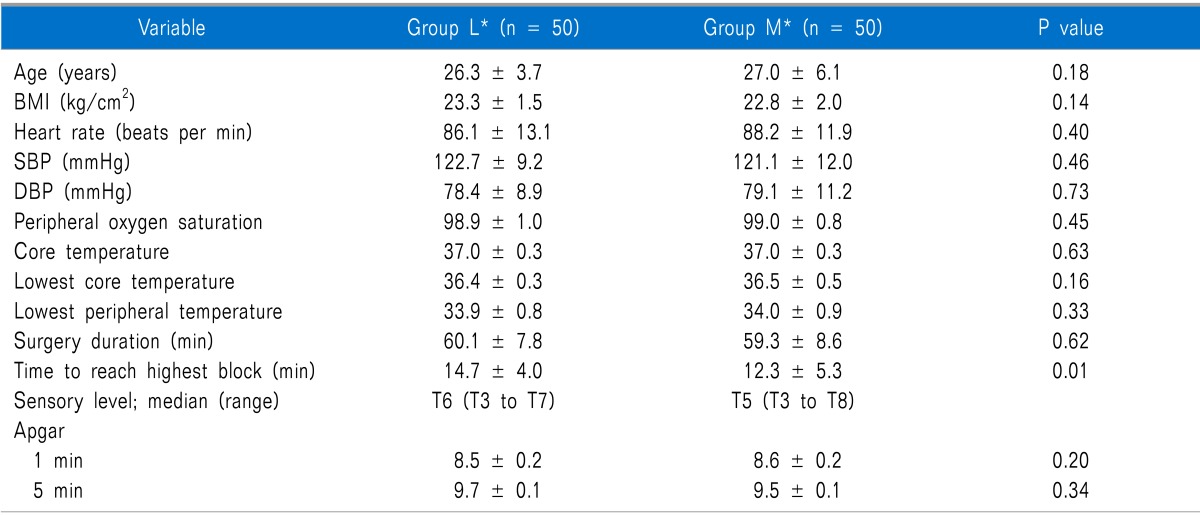
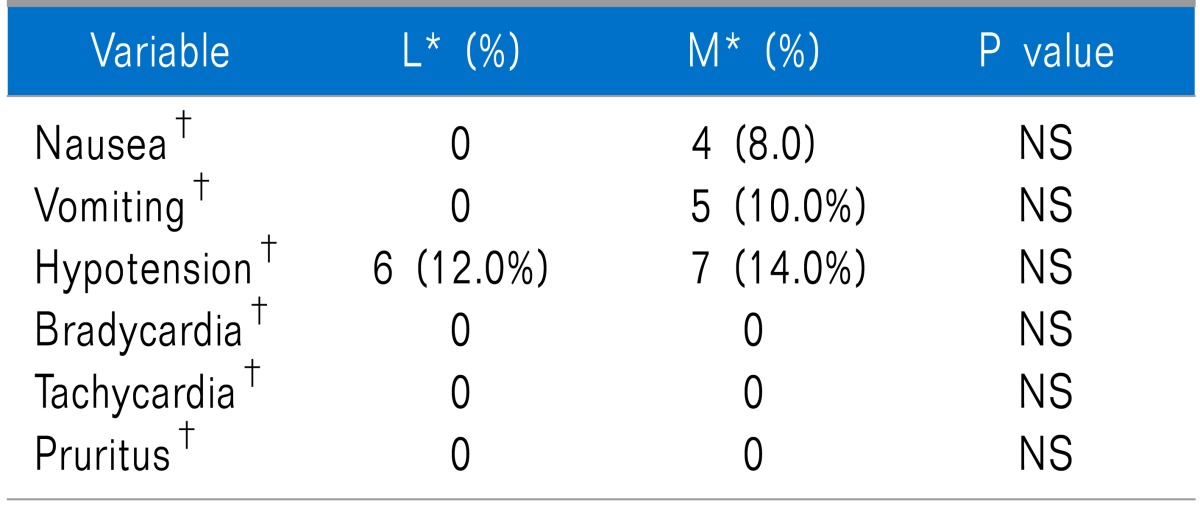
 XML Download
XML Download